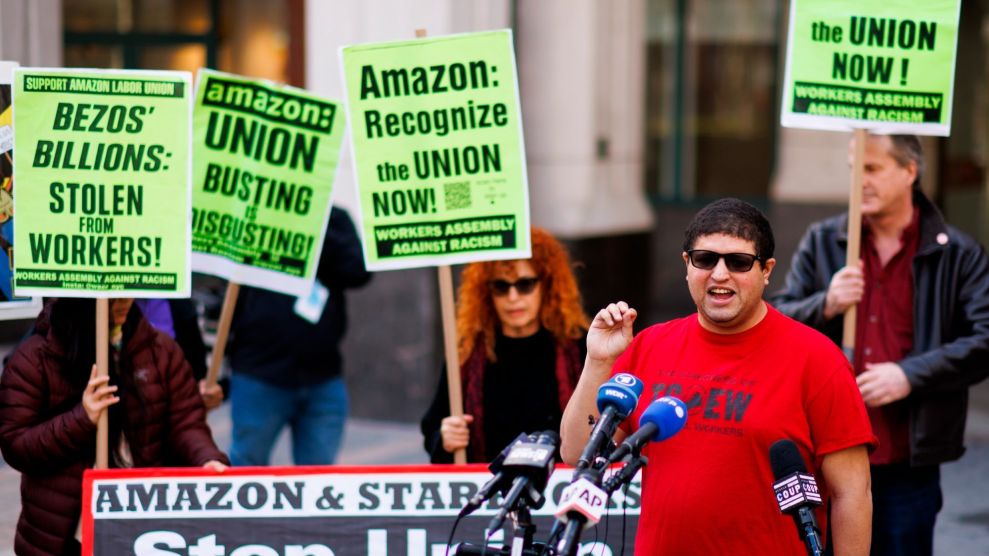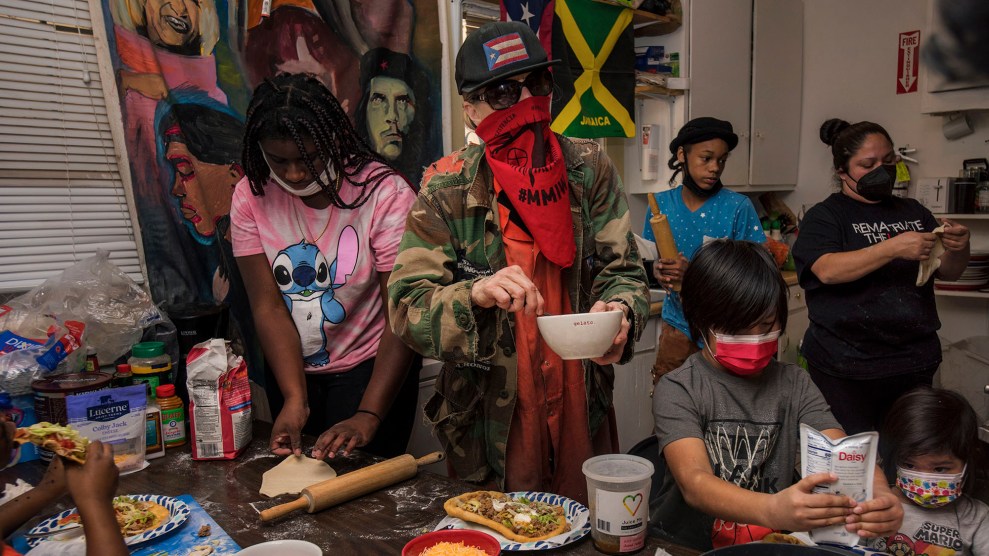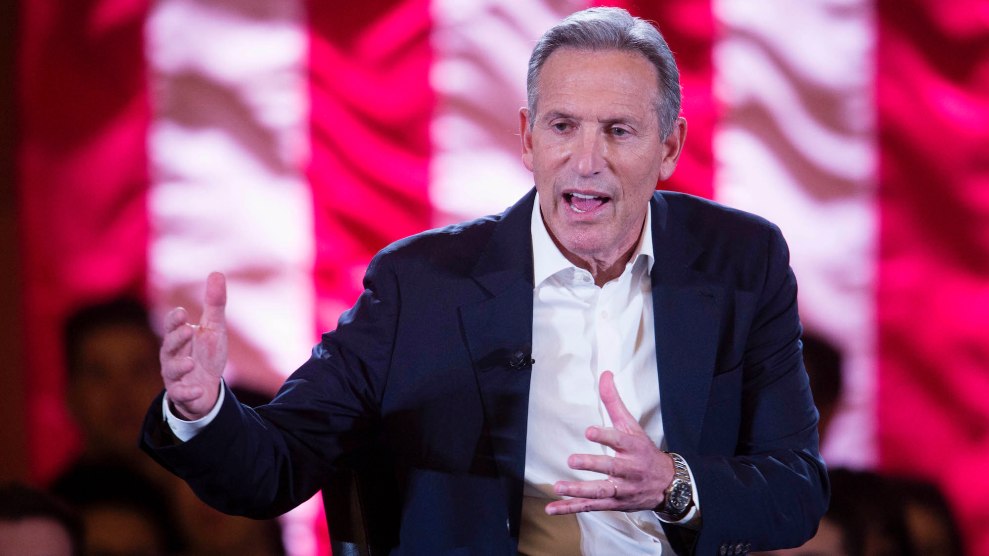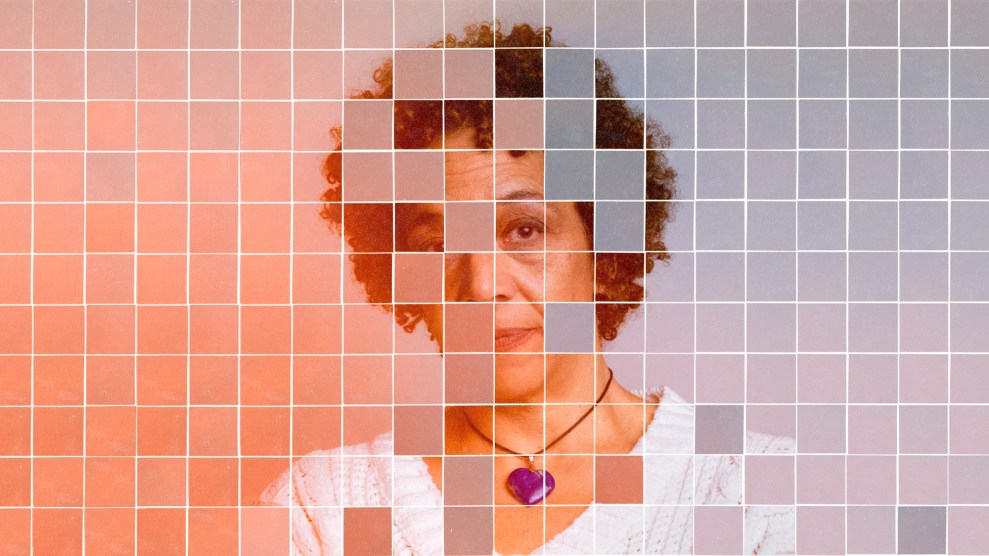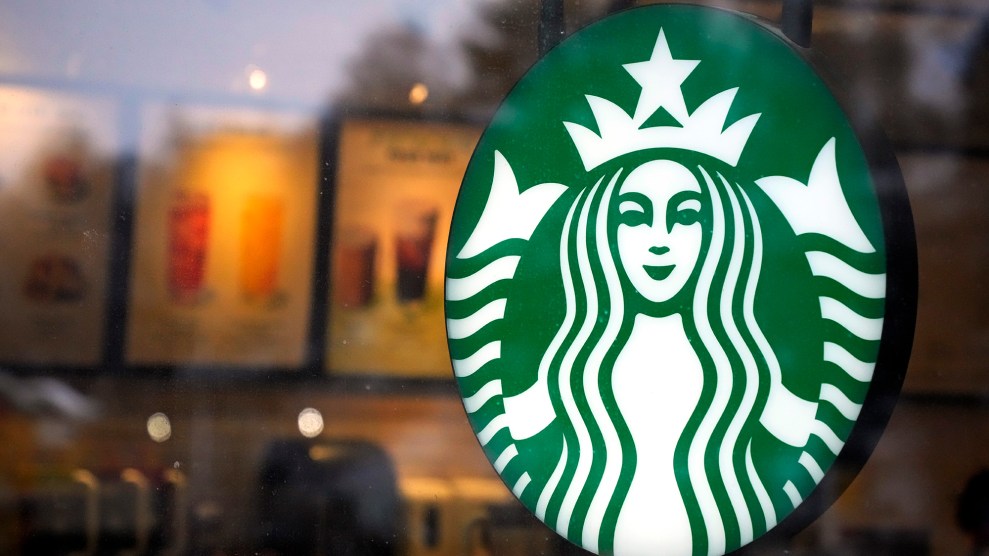
Gene J. Puskar/AP
This story was originally published by the Guardian and is reproduced here as part of the Climate Desk collaboration.
On a chilly recent morning, customers inside a Starbucks in New York City’s midtown were doing what you’d expect: buying coffee, warming up, chatting. But one person was moving through the store with a different purpose: she first approached a woman standing near the door, and then another man seated with a cup of coffee, saying hello, asking how they were and offering them gloves, hats and handwarmers.
This was an outreach worker named Thashana Jacobs, and this store was her first stop of the day. The organization she works for, a homeless outreach and housing non-profit, has been contracted by Starbucks to deal with an issue that the company feels it cannot ignore: the number of unhoused people who come into the store looking for a place to sit, rest and use the restroom.
The program shows how private companies may find themselves filling holes in the US social safety net. And it also takes pressure off Starbucks baristas who may lack the formal expertise needed to deal with customers experiencing a crisis.
Jacobs has become a familiar face along her route. Once outside the cafe, she spotted a neighborhood regular on his bike. He pulled over, and as the two talked, Jacobs urged him to head to a local drop-in center downtown—a storm was coming, promising to bring freezing temperatures. He asked for the address and whether she’d be there, and said he’d stop by later. Jacobs proceeded on to the next Starbucks.
Heading past tourists and families bundled up for the weather, Jacobs took it as a good sign that this client asked her questions about the drop-in center; on other days, he had shrugged off the suggestion. But “if people get cold enough, they’ll say, ‘Listen, I’m ready,’” said Jacobs.
In New York City, it is clear why a Starbucks is an attractive place to pass the time. Some people experiencing homelessness say they prefer the streets over the city’s homeless shelters, some of which have strict rules, such as curfews, and shared sleeping spaces.
The process of obtaining permanent housing can be long and overly bureaucratic; the city’s chief housing officer has called it a “paperwork first” approach. There are many other resources available in the city, such as transitional housing, but for unhoused people, retail spaces like Starbucks also offer an everyday place of refuge. That means that baristas, cashiers, and other food service workers often play the unofficial role of social worker on the job.
Starbucks began bringing trained outreach workers into its stores in 2020, and the program is active in eight US cities, including Los Angeles, Philadelphia, Chicago and Seattle. Homelessness rates in all these cities are high or growing. In New York, for instance, the number of people sleeping in shelters reached almost 66,000 last October. And the national homelessness rate remains stubbornly high.
A spokesperson for Starbucks described the program as one of the ways that the coffee giant seeks to support and strengthen the communities around its stores, and better equip employees to meet the challenges of their jobs. With this program specifically, Starbucks “wanted to be a part of the solution” alongside nonprofits with experience in this area, the spokesperson said.
Jacobs works for Breaking Ground, the nonprofit that partners with the coffee retailer in New York, and is part of the team that checks in on roughly 15 stores in the city. She and her colleagues work to build long-term relationships with their clients, with the goal of helping them secure housing. But she also serves their immediate problems, whether by pointing them in the direction of other social services like soup kitchens, or simply offering them a new pair of socks.
Jacobs, who has been at Breaking Ground just short of two years, is level-headed and warm. Walking past theaters and restaurants on Broadway, she seems to have X-ray vision, pointing out unexpected places that have become escapes for unhoused people—such as a furniture section at a department store—and the locations of resources they can access. There is a recharge station in Times Square where folks can get a cup of coffee and power their phone, and a street medicine van at Herald Square.
Breaking Ground’s private contracts with retailers like Starbucks allow Jacobs and her colleagues to go where the city oftentimes cannot: in New York City, the department of homeless services works in public settings, such as on the subway and on the streets.
That day, Jacobs carried several items in her backpack. There was a team phone, which she uses to take notes throughout the day and share shift reports with colleagues, and which Starbucks workers and clients can also use to reach her. For her clients, she toted warm clothes and she had a color-coded binder of resources, such as one-pagers listing nearby soup kitchens, drop-in centers, medical centers and places offering showers.
Jacobs says she rarely hears “negative stories” about her clients; a spokesperson for Breaking Ground says that unhoused people are likelier to be the victims of crime rather than perpetrators. Yet sometimes homeless people are implicated in explanations for why particular Starbucks outlets have shuttered.
Last year, the company’s decision to close 16 stores across a number of cities came after reviewing employee complaints over store safety, and was in part related to “chronic homeless issues, substance abuse and social unrests,” a company spokesperson told CBS News. A Starbucks spokesperson told the Guardian the company regularly opens and closes stores as part of its standard business practices—but that it has closed a total of 35 US stores since July over what it described as security concerns.
